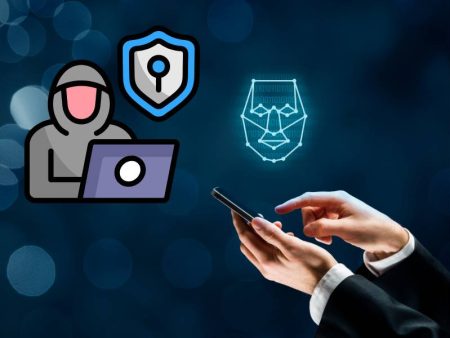Ever been on a website, feeling a bit lost, so you click the chat bubble… and get a generic “Hi! How can I help?” That’s a chatbot in its basic form. Now, imagine a smarter assistant: one that understands your preferences, guides you to the perfect product, even keeps track of what you’ve looked at before. That, dear reader, is an AI shopping assistant—and today, we’re unpacking what sets them apart.
Let’s dive in, shall we?
A Conversation at the Start
Picture this:
You: I’d like a gift for my mom, budget $50–$70.
Chatbot (basic): We have Mother’s Day Specials! Shop now.
AI Shopping Assistant: Oh, awesome! Your mom loves cozy things, right? Check out these cashmere throws or the waffle-knit blanket—within your budget and with free shipping.
Big difference.
What Exactly Is a Chatbot?
A chatbot is a script-driven tool that responds to specific commands or keywords. They’re great for:
- Automated FAQs (“What’s your return policy?”)
- Simple tasks (“Track my order”)
- Basic engagement (“Subscribe to newsletter?”)
But when the conversation gets more complex (“What size blender fits under my cabinet?”), it often hits a wall.
The Rise of the Smart Shop Assistants
Enter the Ecommerce AI Chatbot—this is a next-level tool built to learn, personalize, and guide your shopping experience seamlessly.
- It remembers what you liked
- It analyzes your financial and style preferences
- It offers precise recommendations based on behavior
It’s the difference between a scripted tourist map and a local friend who knows all the secret spots.
Behind the Magic: Core Differences
| Feature | Chatbot | AI Shopping Assistant |
| Conversation Depth | Keyword-based, shallow | Multi-turn, context-aware |
| Personalization | None or minimal | Customized recommendations, intent-based |
| Intelligence | Static flows | Machine learning + dynamic adaptation |
| Integration | Handles FAQs or support | Links with browse history, inventory, CRM |
| Value | Saves staff time on basic queries | Drives sales, increases engagement, loyal fans |
Story Break: My Late-Night Blend Mystery
Let me share a quick anecdote:
I moved into a new apartment and wanted a blender small enough to hide under the cabinet but still powerful. I visited an online store, clicked the chatbot:
Me: What blender fits here (picture included)
Chatbot: Try our CompactBlender 3000!
That was it.
Then I tried a smart assistant on another site:
Assistant: Got it! I see you care about power and space. This model (CompactBlender 3000) is 8″ tall, but here’s a list of 3 products with <8” height and 600W+—and user reviews for each. Want to compare?
That took 5 mins off Googling and gave me exactly what I needed. I bought within minutes.
The Emotional Difference
Here’s something that always gets me: when tech feels human.
Chatbots often feel like a digital breakroom — friendly until they don’t understand you.
AI shopping assistants, when done right, feel like a thoughtful concierge. They sense your need, mirror it, and ease your journey.
That shift from mechanical to empathetic? It’s huge—and it influences revenue, trust, and user delight.
How It Works Behind the Scenes
- User Input: Could be text (“I’m looking for…”) or image
- Intent Recognition: AI figures out what you’re after
- Data Matching: It pulls products aligned with your needs
- Natural Conversation: It asks follow-ups (“Do you care about color?”)
- Recommendation Output: Presents personalized options
- Feedback Loop: Learns from interactions to get smarter
Like a retail assistant that never forgets and never sleeps.
The Platform Landscape
You don’t need Amazon’s resources to implement this. Solutions labeled Ecommerce AI Chatbot let even small online stores add smart assistants in days.
On top of that, tools like the AI Dropshipping Store Builder integrate automated product listings with smart assist features—giving you both the catalog and the concierge in one place.
You get inventory management and intelligent recommendation, in one neat package.
Non-linear Flow: Not a Funnel, But a Dialogue
The magic of AI assistants is in their conversation branches.
- Browse jeans → AI suggests matching tops
- Compare two blenders → AI offers cart combo (“Add the extra jar?”)
- Leave cart idle → AI pings (“Still there? Want help choosing the right lid?”)
It’s not forced funnels—it’s a friendly flow of sensible dialogue.
My Take: Why I Prefer Smart Assistants
No offense to chatbots—I’ve even built a few for simple tasks.
But those end when questions get nuanced. When what I really want is an answer that feels thoughtful.
Smart assistants fill that gap. They’re digital empathy in action.
Plus, they remove friction. And for people like me, who hate hunting the right widget—they’re game changers.
Challenges & Missteps
This stuff isn’t perfect. Common issues include:
- Recommending out-of-stock items
- Getting requests wrong (I asked for red dress, got blue gingham)
- Sounding too robotic if not trained well
But you know what? Those missteps help refine the AI. They highlight where conversation needs tuning, where product data needs cleanup, and where tone needs warmth.
Best Practices for Brands
Want to add a shopping assistant? Try this:
- Start small — Define your top 5 use-cases (cart help, sizing, suggestions)
- Clean product catalog — Accurate data is the AI’s fuel
- Keep voice human — Inject banter, empathy, small talk
- Test & iterate — Watch interactions, refine tone and logic
- Monitor satisfaction — Survey users post-chat
If you do these well, even small stores can deliver VIP-level support.
Human + AI = Hybrid
Let’s be real. Some queries need humans:
- Support issues
- Personalized style advice
- Complex refunds
The best implementations combine assistant + live agent fallback:
- AI tries first
- If confused or frustrated, route to a human
- Human reviews conversation and jumps in
That hybrid is gold. You get 24/7 help, with emotional intelligence from actual humans when needed.
Emotional Payoff: Delight That Converts
Remember the blender? That experience influenced me to choose that site again. I didn’t just buy, I felt seen. I felt understood. That’s worth more than a sale—it’s brand affinity.
AI shopping assistants do more than increase conversions—they build connections.
Final Thoughts: Do You Need More Than a Chatbot?
Ask yourself:
- Are your customer questions basic? Use a chatbot.
- Do people often ask product-comparison or sizing questions? AI assistant will shine.
- Want to increase average order value? Smart recommendation helps.
- Love your brand voice? You can keep it intact, even with AI.
It’s not about tech bragging rights—it’s about thoughtful service.
TL;DR
- Chatbots = keyword-based scripts; good for FAQs
- AI shopping assistants = context-aware, multi-turn, personalized support
- Smart assistants feel human and drive conversions
- Tools exist that let even small stores deploy these quickly (Ecommerce AI Chatbot + AI Dropshipping Store Builder)
- The goal? Better service, less friction, deeper brand love
So… Which One’s Right for You?
If your store’s simple and questions are minimal, a chatbot might do the trick. But if you’re serious about lifting AOV, delighting customers, and scaling brand trust—I recommend exploring smart assistants.
Need help drafting prompts, mapping flows, or evaluating vendor options? I’d love to geek out with you.
Let’s reimagine online shopping… one helpful chat at a time.


